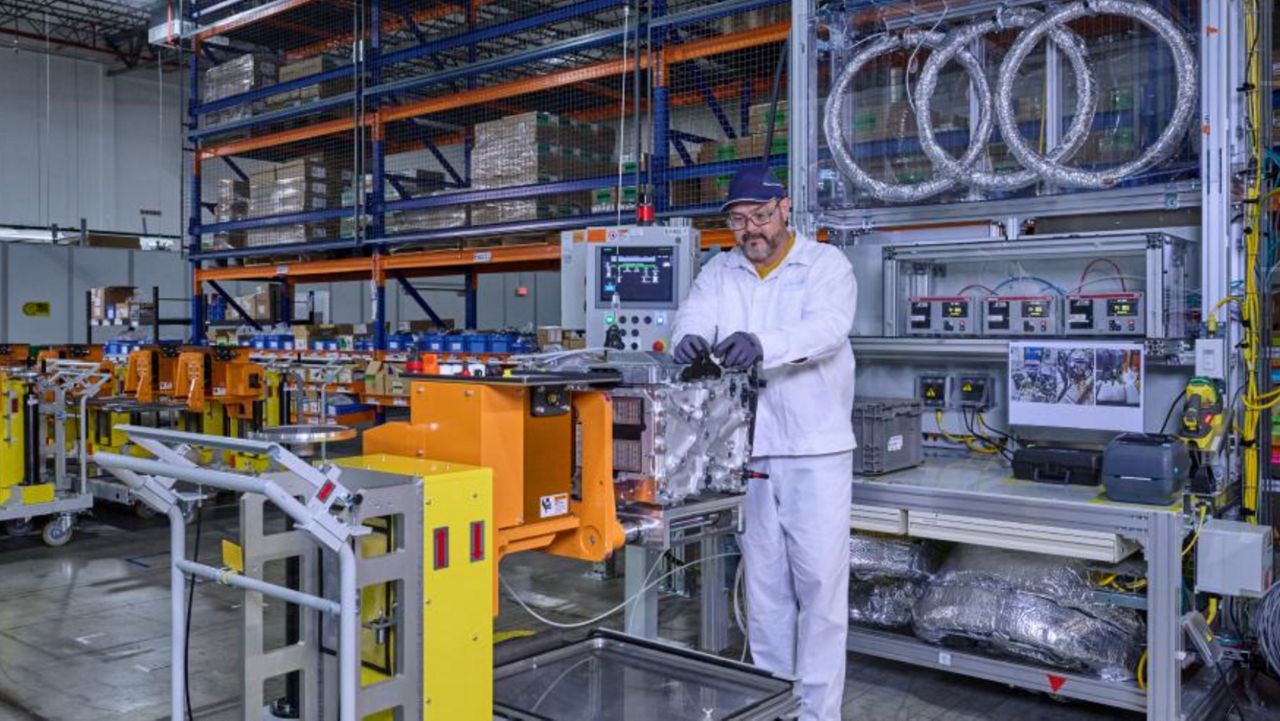General Motors and Honda began construction on their first joint venture to produce hydrogen fuel cells.
The new Fuel Cell System Manufacturing factory will co-develop the technology for both companies to use in cars, heavy-duty vehicles, boats, planes and other applications.
“This is a historic day for the industry as GM and Honda are the first full fuel cell system manufacturing joint venture to begin volume production of fuel cells for transportation and beyond,” FCSM president Suheb Haq said in a statement. “This commitment aligns with our mission of making high quality, durable and affordable hydrogen fuel cell systems for a wide range of applications and customers.”
The announcement comes just a few months after the Biden administration announced $8 billion to create regional hydrogen hubs around the country. Designed to create a national clean hydrogen network, the hubs will produce hydrogen that can be used for transportation and to supply energy.
Hydrogen fuel cells generate electricity with an electrochemical reaction when hydrogen combines with oxygen. One of the cleanest forms of energy when made with renewable sources such as biogas and electrolysis, fuel cells emit nothing but water.
“We integrated the strengths of Honda and GM to create the most capable production system at this joint venture,” FCSM vice president Tetsuo Suzuki said in a statement. “We brought a mass production mindset with attention to detail and a focus on high quality, and now we are ready to meet the needs of the customers for the future applications of fuel cell technology and the beginning of the hydrogen era.”
The joint venture between the two automakers dates back to 2013 when engineers from both companies began to co-develop a next-generation fuel cell. Working together helps the companies lower costs to develop and manufacture the technology through economies of scale, common sourcing of materials and automation of various aspects of production.
The companies estimate the new fuel systems they make at the 70,000-square-foot plant will cost a third less than the fuel cell system used in the 2019 Honda Clarity Fuel Cell vehicle.
Honda and GM are among a short list of automakers that have produced fuel cell vehicles. Honda has been working on the technology for 30 years. GM’s dates back to 1966, when it developed the first vehicle to be powered with hydrogen. The Chevrolet Electrovan could travel 120 miles and had a top speed of 70 miles per hour.
In December, GM announced a joint development agreement with Autocar Industries to create hydrogen-powered zero-emissions vocational vehicles. Autocar’s first hydrogen-powered trucks are expected to go into production in 2026 using GM’s Hydrotec power cubes.
GM sees hydrogen fuel cells as a key component of its overall electrification strategy, which so far has largely consisted of battery-electric vehicles. Chief executive Mary Barra has said the company plans to phase out vehicles powered with fossil fuels by 2035.
Fuel cells are lighter than batteries and can be refueled far more quickly, enabling quicker fill ups, longer travel distances and larger payloads.
On Thursday, Honda said its next-gen fuel cell system will help the company achieve its goal of carbon neutrality for all its products and corporate activities by 2050. Later this year, Honda will launch a hydrogen fuel cell version of its most popular SUV, the CR-V.
“This is not simply a choice between battery electric or hydrogen fuel cell technology but selecting the right energy source, in the right place, for the right purpose, to achieve carbon neutrality as quickly and efficiently as posslble,” American Honda Motor Co. vice president of sustainability Jay Joseph said in a statement.
Honda sees hydrogen playing a part in renewable energy generation, storage and use for a variety of purposes, including backup power for electrical utilities and as fuel for passenger vehicles, commercial vehicles and construction equipment.



